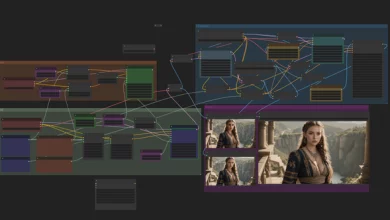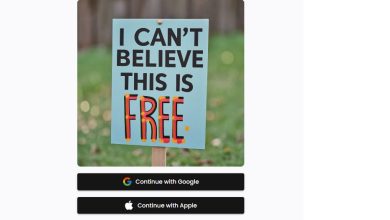
Customer feedback has been identified as a cornerstone of business growth strategy. A Harvard Business Review study supports this by showing that customer churn can be significantly minimized through the mere act of getting customer feedback. Customers like being heard, and asking for feedback from them reinforces this impression. However, many companies who collect feedback, don’t analyze them, let alone act on them. In this post, we go through how best to collect and analyze customer data and make it count for your business.
Why Should You Collect Customer Feedback?
Customer feedback is critical to provide a roadmap for your company’s growth. It alerts you to what you are getting right or wrong, all from the customer’s perspective. Whether it’s addressing customer complaints or introducing new product features, customer input is essential. Feedback is the key to making your customers the heart of your business.
How to Collect Customer Feedback
- Surveys such as NPS:
NPS stands for Net Promoter Score. It is obtained through the following mathematical formula:
Percent Passives – Percent Detractors =NPS
Detractors stand for those who rate from 0 through to 6. For those who rate you at 7 or 8, we use the term Passives. Promoters fall in the 9 or 10 range ratings.
An example can be used to make this clear.
Let’s say that you have 100 respondents with the following breakdown:
- Ten gave responses falling in the range of 0 to 6. This makes up the Detractors.
- 40 respondents fell in the range of 7 to 8. These are the Passives
- 50 responded in the 7 to 10 range. These are the Promoters.
The following is the description for these ranges:
- Above zero: Good
- Above 50: Excellent
- Over 70: world-class
Here is how to get your NPS:
NPS = (50/100) x100 minus (10/100) x 100=40
A negative 100 (-100) gives you the worst score, while a positive 100 (+100) gives the best.
A real-life example of NPS survey use is Apple, which strives for improved retail store experience by detecting detractors. NPS excels in its simplicity and convenience of use. Everyone in your company can easily understand it, and setting it up takes only a few minutes.
NPS surveys are ideal for gauging general sentiments that users have about transactions. They can be applied to touchpoints across your company, such as customer support, sales, etc.
-
Reviews
You can use online reviews as a great place to get feedback. Examples include:
Quotes or testimonials left on your own website. They are obtained by asking long-term customers to share their testimonials after using a product or service.
Peer review sites: these include Facebook reviews, google reviews, yelp, G2 Crowd, or Amazon sites. The feedback is also obtained by asking through email or by adding links to your site for customers to leave an opinion.
Customer reviews are part of social proof, which is a powerful way of influencing others. Many shoppers are swayed by social proof when they are undecided on whether to buy a product. In fact, 90 percent of buyers visited a business after first reading an online review. This makes customer reviews a great source of customer feedback.
Customer interviews and stories: stories have a special appeal to all of us. Through customer interviews, companies can use stories to showcase their services and products to other customers.
-
Social Media
Social listening is one of the richest sources of customer feedback. It’s a unique opportunity because it teems with candid information from customers. These include direct comments, mentions, and polling results found in forums and websites.
How to Analyze Customer Feedback
After you have collected your data, you can proceed to the next step of interpreting it. A customer feedback tool can help you to draw insights from several sources at the same time.
- Gather All Data in One Place
This means aggregating your customer feedback together with all its key elements. Typically the data will need to be exported, and relevant customer metadata is mapped into a spreadsheet. This helps to get all your results together for analysis and determine the best plan of action for each issue. During this process, avoid discarding any customer data as it could prove to be valuable.
- Categorize and Sub-Categorize Feedback
Categorizing your feedback is a crucial first step toward helping you make sense of it. These categories include:
Feedback type: these include issues customers are raising, such as new feature requests, usability issues, bug problems, billing problems. It can also include generic positives or negatives like: “I love/hate your product”. It can also include hard-to-categorize feedback which can be called Other. Categorizing your data based on a feedback theme is ideal for highly diverse feedback, which is voluminous. Themes may include aspects about a product, e.g., the Instagram customer feedback may be categorized as photostream, stories, mentions, or profiles.
Subcategories: The categories can be further divided into subcategories. This helps businesses see smaller parts of their operations, which usually go unnoticed but impact the overall business.
- Break Feedback into Positive, Negative, Neutral, or Other
The next step is to split the feedback into positive, negative, neutral, or other. This gives your team a much more concise presentation to get a glance at things that went right, wrong, were satisfactory, or need to be discarded.
- Push One Step Ahead: Look for Root Causes
Whether positive, negative, or neutral, you can now dig for the root cause for each type of feedback.
It may be tempting to pass over the positive feedback, but it’s just as important as negative feedback. They can be used to complement and motivate the team so that they can keep up the good work they have been doing to build customer loyalty.
How to Take Action
A Microsoft study found that 52 percent of people worldwide believe that customer feedback should be acted upon. So resist the temptation of failing to follow through with your data – a pitfall many companies fall into.
Since you now know the root cause of each problem, you need a plan to solve each of them. The purpose of your action is to turn negative feedback into positive feedback. For neutral and negative feedback, find out what led to dissatisfaction. The key to acting on your feedback is to ensure that it provides insights that are actionable or easy to act on.
Getting Actionable Insights from your Customer Feedback
As a preliminary step, you need to know how to differentiate your feedback into insightful or non-insightful. Specifically, is the data it produces insightful or non-insightful?
All customer feedback will either yield insightful or non-insightful data.
- Non-insightful: data that adds nothing new to what you already understood. For example, low season flights are cheaper is something that is old news.
- Insightful: data that defies what you knew, reinforces a suspicion you had, or quantifies importance. For example, if low seasons flights turn out to be more expensive, this is insightful. Such a situation would call for closer analysis or rethinking.
How Actionable are Your Insights?
Customer feedback analysis can give you three kinds of actionable insights.
- insights that inspire action and critical thinking
- insights that produce validation but don’t need action
- insights that cause you to rethink your strategy
Actionable insights refer to any direct, meaningful actions that you can take after analyzing raw data. Insights are not always actionable. Actionable insights can be easily used for strategic, thoughtful decisions. Since these insights come straight from customers, they can produce tangible business success.
Conclusion
A customer feedback strategy is part of sound customer feedback management. This is a smart way for a company to improve service or retain customers. But collecting, analyzing, and gaining actionable insights from a large volume of customer feedback can be impractical using traditional, manual methods.
You can invest in an automated tool that eases processes such as text or sentiment analysis. This quickly helps you pick up patterns such as high-frequency word combinations and tones that can be classified into positive, neutral, or negative. It both analyzes and generates insights for you in just minutes. You’ll be able to see detailed reports that pinpoint what actions to take.




